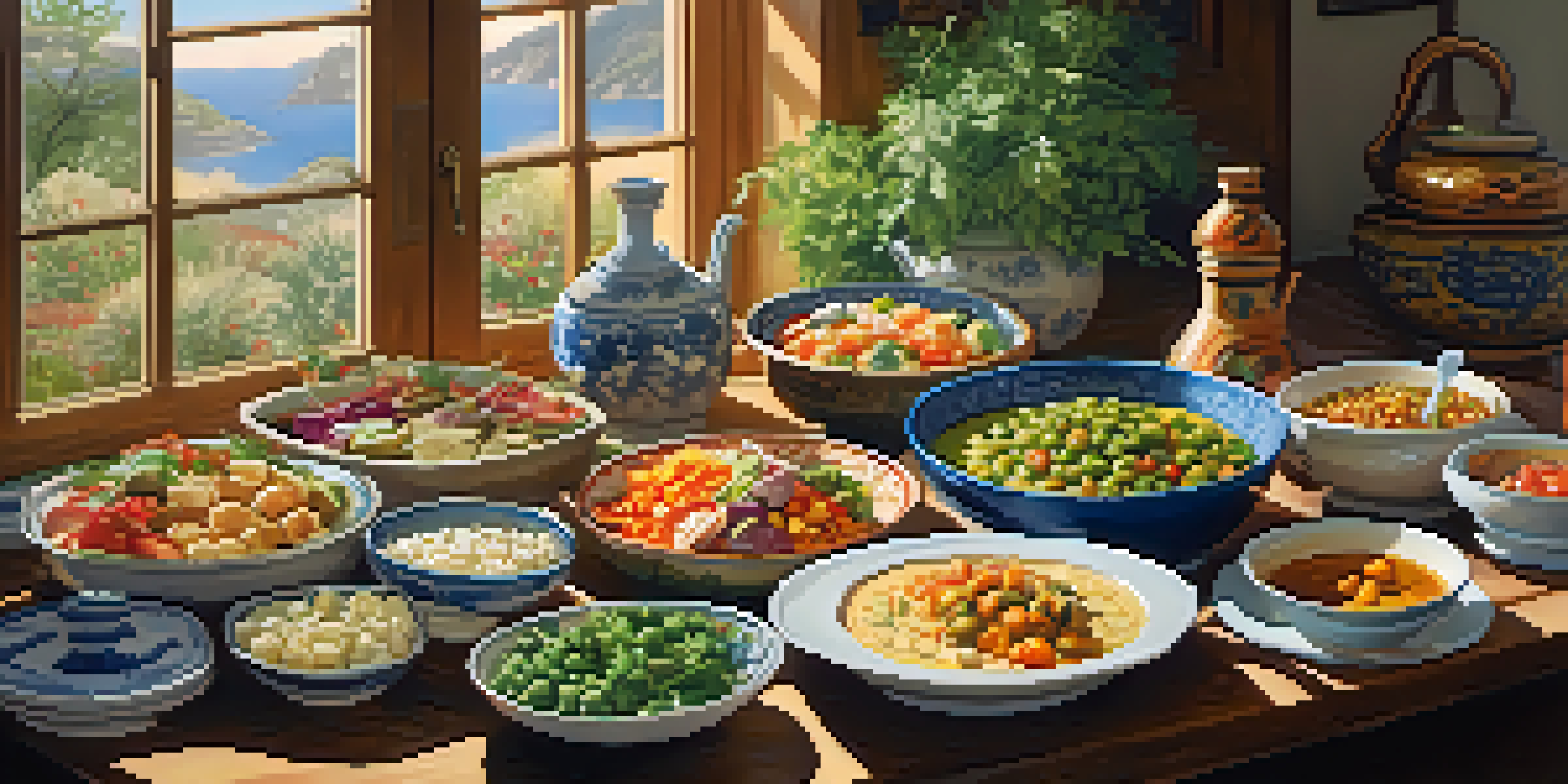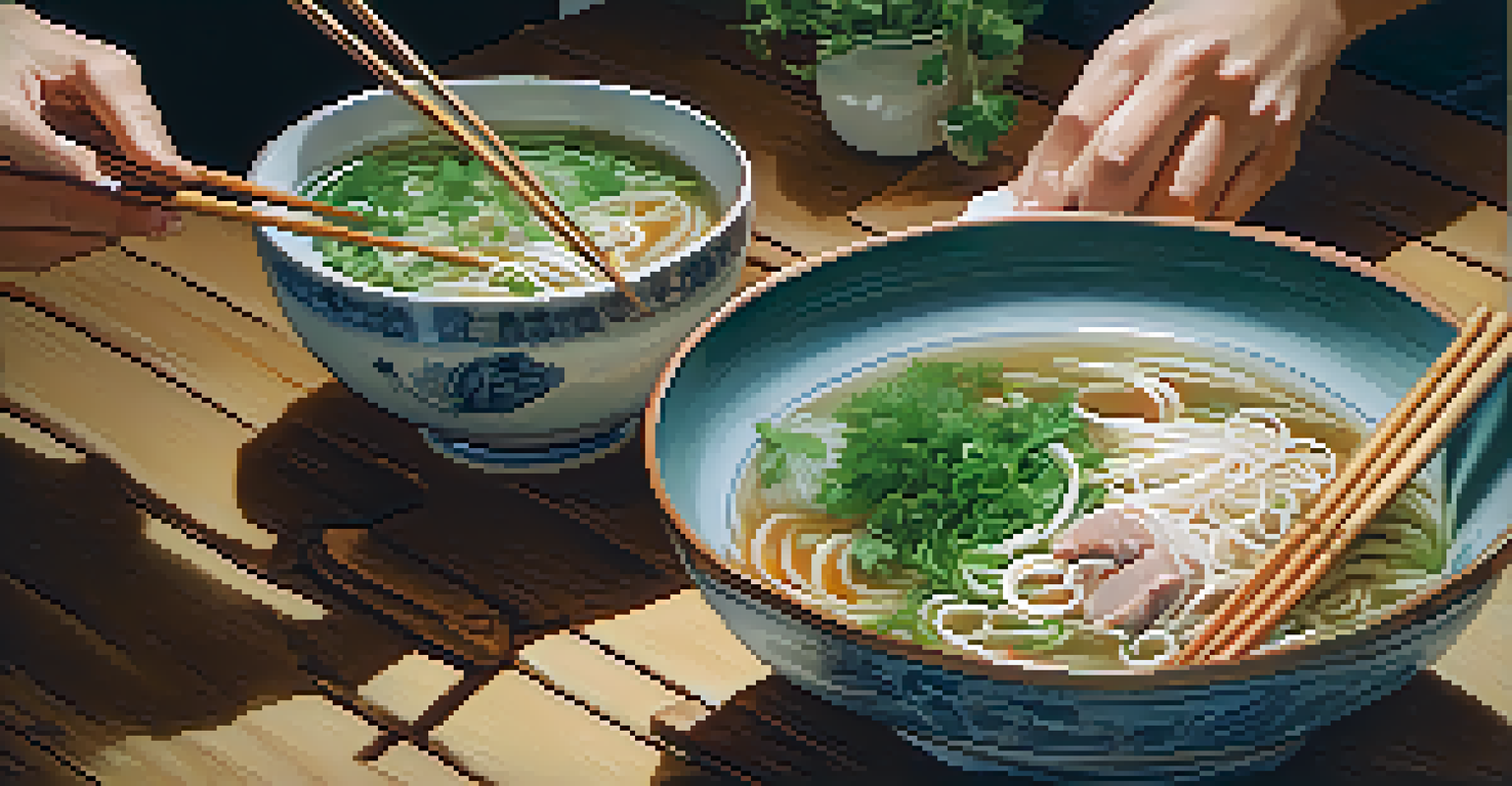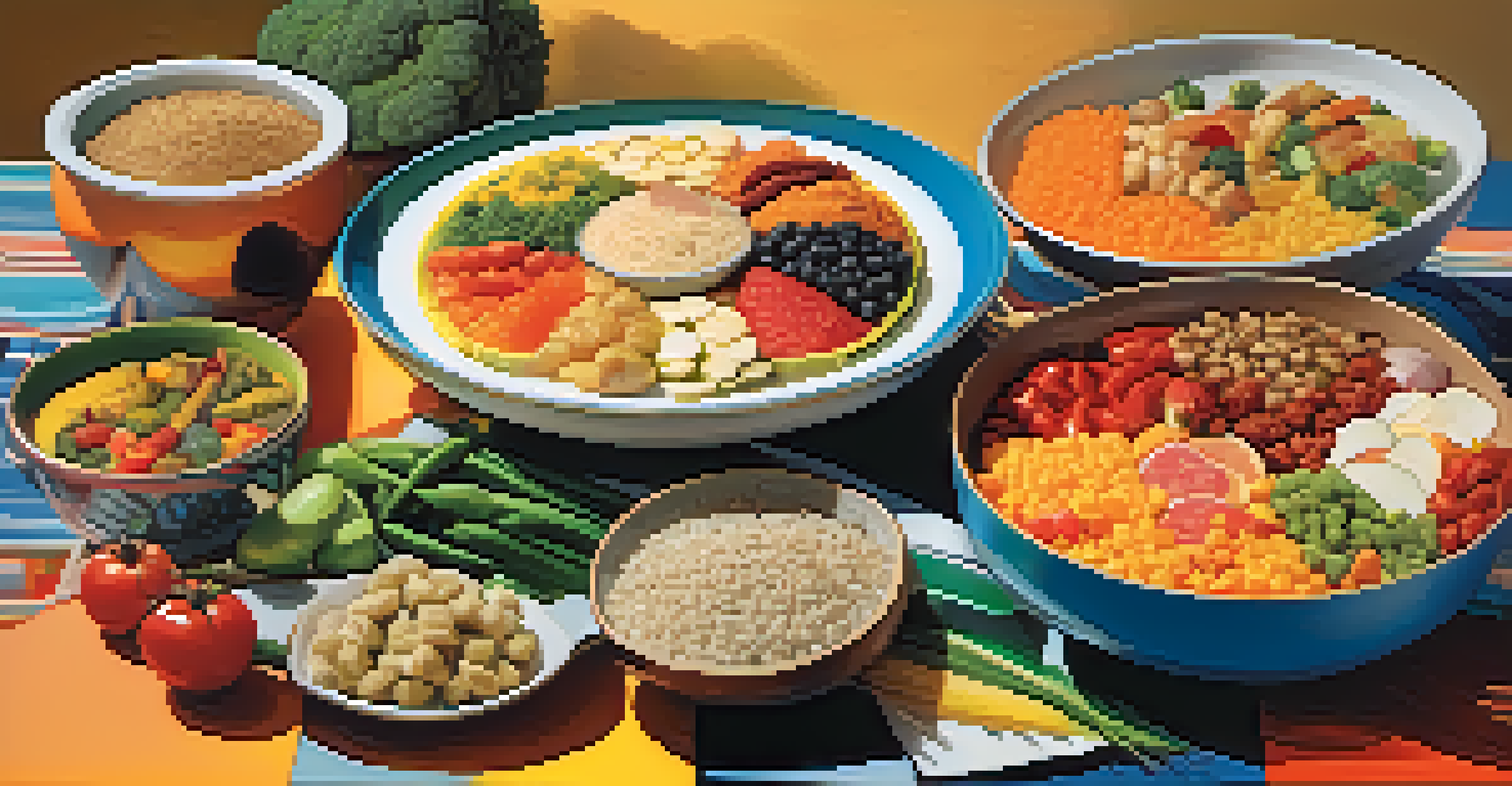Incorporating Cultural Foods into Personalized Nutrition

Understanding Personalized Nutrition and Its Importance
Personalized nutrition tailors dietary advice to individual needs, preferences, and lifestyle. It recognizes that one-size-fits-all approaches often fall short when it comes to health and well-being. By considering factors such as genetics, metabolism, and activity levels, personalized nutrition aims to create a sustainable and effective eating plan.
Let food be thy medicine and medicine be thy food.
This approach goes beyond just calorie counting or following general dietary guidelines. It involves understanding how different foods affect our bodies uniquely. For instance, while one person may thrive on a high-carb diet, another might feel better with a focus on proteins and healthy fats.
Ultimately, personalized nutrition encourages a deeper connection with food and fosters healthier eating habits. This is where incorporating cultural foods becomes a game-changer, enriching the experience and ensuring dietary plans resonate on a personal level.
The Significance of Cultural Foods in Our Diets
Cultural foods are more than just meals; they represent traditions, history, and identity. They bring the flavors of our heritage to the table, offering comfort and familiarity. Incorporating these foods into our diets not only satisfies our taste buds but also reinforces our connection to our roots.

Moreover, many cultural dishes are rich in nutrients and can contribute significantly to a balanced diet. For example, Mediterranean diets are renowned for their health benefits, emphasizing whole grains, olive oil, and fresh vegetables. Similarly, traditional Asian cuisines often feature fermentation, which can enhance gut health.
Recognizing the value of cultural foods allows us to celebrate diversity in our diets. Including these foods in personalized nutrition not only respects individual preferences but also promotes a more inclusive approach to healthy eating.
How to Integrate Cultural Foods into Your Nutrition Plan
The first step in integrating cultural foods is identifying which cuisines resonate with you. Think about your heritage or dishes that bring back fond memories. This personal connection can make healthy eating feel less like a chore and more like a delightful exploration.
Food is not just what we eat; it is also who we are.
Next, consider how traditional ingredients can fit into your personalized nutrition goals. For example, if you’re focusing on reducing sugar intake, you might explore naturally sweet cultural dishes that use fruits or spices instead. This way, you maintain the essence of the cuisine while adhering to your health objectives.
Finally, don’t hesitate to experiment in the kitchen. Try swapping out ingredients in your favorite recipes to make them fit your nutritional needs better. Embracing this creative approach not only enhances your meals but also keeps your eating routine exciting and fresh.
Exploring Nutritional Benefits of Various Cultural Foods
Every culture offers unique ingredients that provide specific health benefits. For instance, Indian cuisine often incorporates spices like turmeric and ginger, known for their anti-inflammatory properties. Including these spices in your meals can boost your overall health while adding vibrant flavors.
Similarly, the traditional Japanese diet is rich in fish, which is high in omega-3 fatty acids that support heart health. By enjoying sushi or grilled fish dishes, you can nourish your body while savoring the essence of Japanese culinary art.
Understanding these nutritional benefits can empower you to make informed choices. By prioritizing cultural foods that align with your health goals, you can create a diverse and nutrient-rich diet that celebrates both your heritage and well-being.
Overcoming Barriers to Incorporating Cultural Foods
While embracing cultural foods can be rewarding, it’s important to acknowledge potential barriers. Limited access to specific ingredients can pose a challenge, especially if you’re trying to recreate traditional dishes. However, many cultural foods have adaptable recipes that can substitute hard-to-find ingredients with local alternatives.
Time constraints can also hinder our ability to prepare authentic cultural meals. To tackle this, consider batch cooking or meal prepping on weekends, allowing you to enjoy your favorite dishes throughout the week without the stress of daily cooking.
Lastly, don’t underestimate the power of community. Engage with local cultural groups or online forums to share recipes and tips. By connecting with others who share your culinary interests, you can overcome obstacles and keep your personalized nutrition journey vibrant and enjoyable.
The Role of Mindful Eating in Personalized Nutrition
Mindful eating is an essential component of personalized nutrition, encouraging us to savor every bite. By being present during meals, we can appreciate the flavors, textures, and aromas of the cultural foods we incorporate. This practice not only enhances our enjoyment of food but also helps us recognize our body’s hunger and fullness cues.
When we eat mindfully, we become more aware of how certain foods make us feel. This awareness can guide our choices, allowing us to embrace the dishes that nourish us both physically and emotionally. For example, a comforting bowl of pho may evoke feelings of warmth and satisfaction, making it a perfect choice on a chilly day.
Incorporating mindfulness into your eating habits can transform your relationship with food. By honoring cultural foods through this lens, you create a more meaningful and personalized nutrition experience that celebrates both taste and health.
Celebrating Diversity: The Future of Personalized Nutrition
As we look to the future, the fusion of personalized nutrition and cultural foods promises exciting possibilities. This approach not only caters to individual dietary needs but also embraces the rich tapestry of global cuisines. By celebrating diversity in our diets, we can foster a more inclusive and holistic view of health.
Health professionals and nutritionists are increasingly recognizing the value of cultural foods in diet planning. By incorporating these diverse options, they can help clients create more sustainable and enjoyable eating patterns that resonate with their identities.

Ultimately, the future of personalized nutrition lies in its ability to adapt and evolve. By embracing cultural foods, we can create a vibrant, nourishing, and inclusive dietary landscape that honors our unique tastes and health goals.